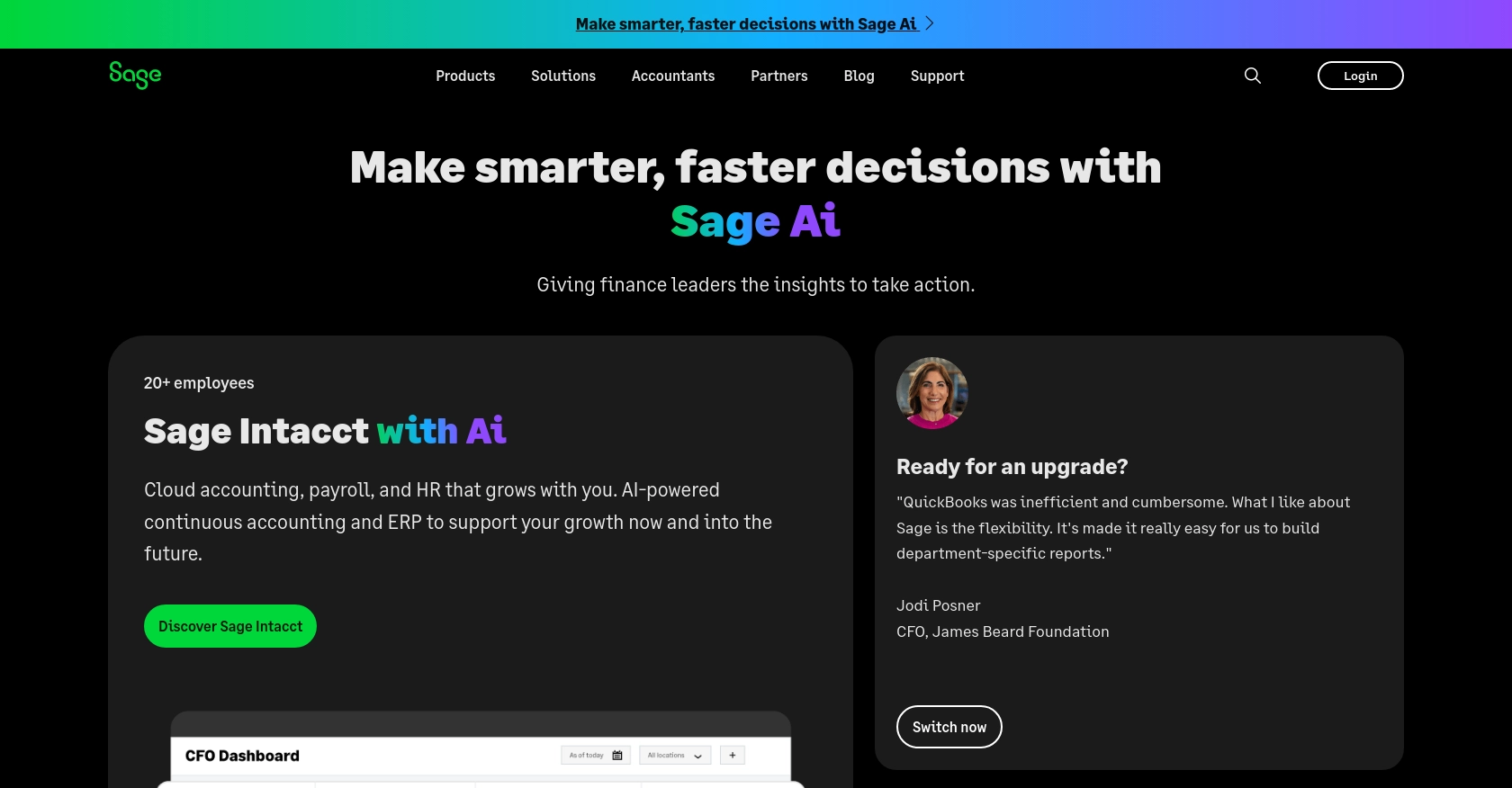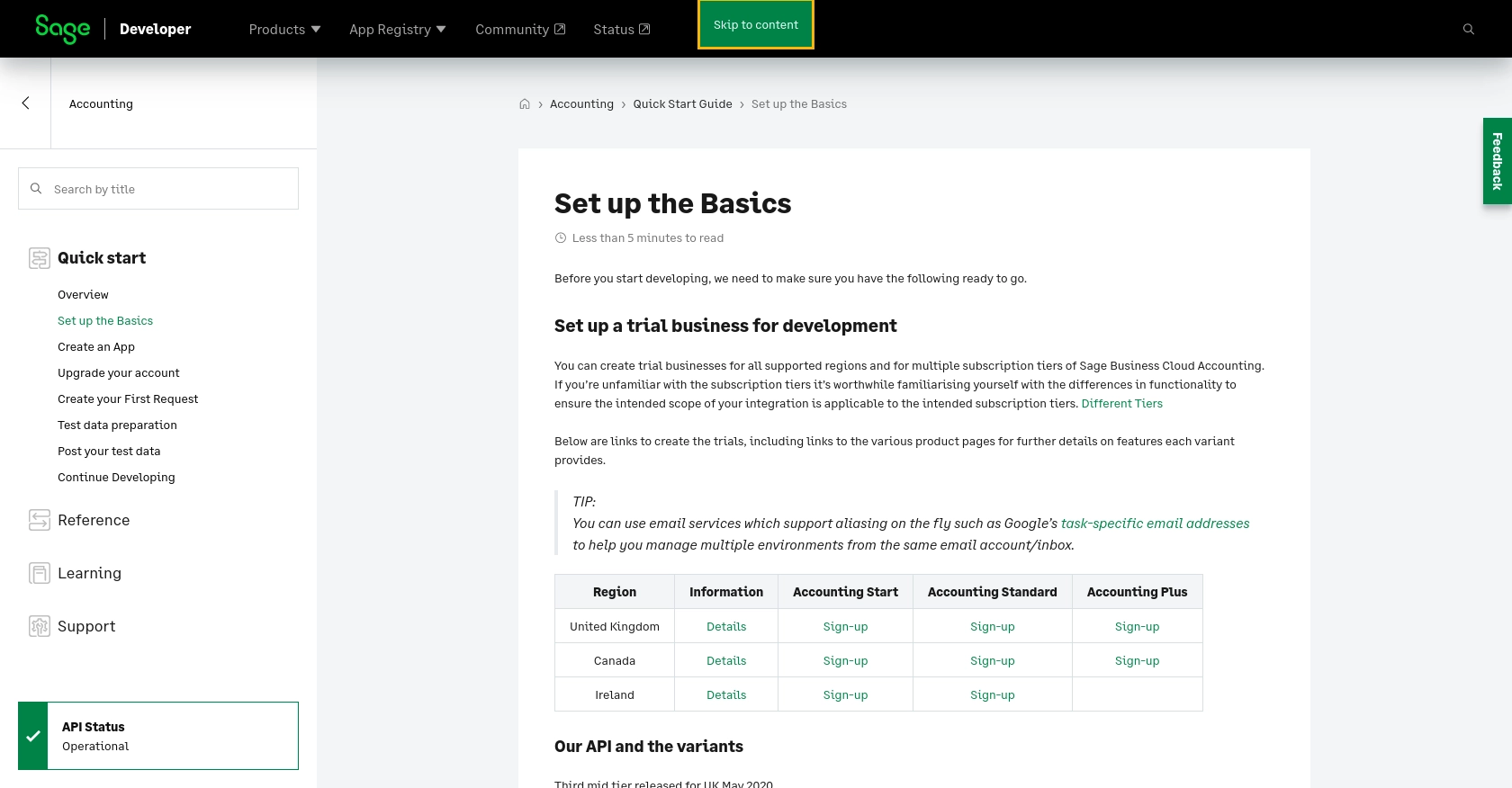Using the Sage Accounting API to Get Sales Invoices (with PHP examples)

Introduction to Sage Accounting API
Sage Accounting is a robust cloud-based accounting solution tailored for small and medium-sized businesses. It offers a comprehensive suite of tools to manage finances, track expenses, and generate detailed reports, making it an essential platform for businesses aiming to streamline their financial operations.
Integrating with the Sage Accounting API allows developers to automate and enhance financial processes, such as retrieving sales invoices. For example, a developer might use the Sage Accounting API to automatically fetch sales invoices and integrate them into a custom reporting system, providing real-time insights into business performance.
Setting Up a Sage Accounting Test/Sandbox Account
Before you can start interacting with the Sage Accounting API, you need to set up a test or sandbox account. This allows you to safely experiment with API calls without affecting real data. Follow these steps to create your sandbox environment and obtain the necessary credentials for OAuth authentication.
Create a Sage Developer Account
To begin, you need a Sage Developer account. This account will enable you to register and manage your applications, obtain client credentials, and configure key details such as callback URLs.
- Visit the Sage Developer website and sign up using your GitHub account or an email address.
- Follow the guide on creating an app to get started.
Register a Trial Business for Development
Sage allows you to create trial businesses for all supported regions and subscription tiers. This is crucial for testing your integration with different functionalities.
- Choose the appropriate region and subscription tier for your trial business. You can find more details and sign-up links on the Sage Developer page.
- Use email services that support aliasing to manage multiple environments from the same email account.
Create a Sage App for OAuth Authentication
Once your developer account and trial business are set up, the next step is to create an app to obtain your OAuth credentials.
- Log in to your Sage Developer account.
- Navigate to the "Create App" section and enter a name and callback URL for your app. Optionally, provide an alternative email address and homepage URL.
- Click "Save" to create your app. You will receive a Client ID and Client Secret, which are essential for OAuth authentication.
Upgrade to a Developer Account
To fully utilize the Sage Accounting API, upgrade your trial account to a developer account. This provides 12 months of free access for testing purposes.
- Submit the upgrade request form with details such as your name, email address, app name, Client ID, and region. More information is available on the Sage Developer upgrade page.
- Once your request is processed, you will receive confirmation via email.
With your Sage Developer account, trial business, and app set up, you're ready to start making API calls to retrieve sales invoices using the Sage Accounting API.

sbb-itb-96038d7
Making API Calls to Retrieve Sales Invoices Using Sage Accounting API with PHP
To interact with the Sage Accounting API and retrieve sales invoices, you'll need to use PHP to make HTTP requests. This section will guide you through setting up your PHP environment, making the API call, and handling the response effectively.
Setting Up Your PHP Environment for Sage Accounting API
Before making API calls, ensure your PHP environment is properly configured. You'll need PHP 7.4 or later and the cURL extension enabled to handle HTTP requests.
- Verify your PHP version by running
php -vin your terminal. - Ensure
cURLis enabled by checking yourphp.inifile or runningphp -m | grep curl.
Installing Required PHP Dependencies
To simplify HTTP requests, you can use the Guzzle library. Install it via Composer:
composer require guzzlehttp/guzzle
Making the API Call to Get Sales Invoices
With your environment set up, you can now make a request to the Sage Accounting API to retrieve sales invoices. Below is a sample PHP script using Guzzle to perform this task:
require 'vendor/autoload.php';
use GuzzleHttp\Client;
$client = new Client();
$accessToken = 'Your_Access_Token'; // Replace with your OAuth access token
try {
$response = $client->request('GET', 'https://api.sage.com/accounting/v3.1/sales_invoices', [
'headers' => [
'Authorization' => 'Bearer ' . $accessToken,
'Accept' => 'application/json',
]
]);
$data = json_decode($response->getBody(), true);
foreach ($data['sales_invoices'] as $invoice) {
echo 'Invoice ID: ' . $invoice['id'] . "\n";
echo 'Invoice Total: ' . $invoice['total'] . "\n";
}
} catch (Exception $e) {
echo 'Error: ' . $e->getMessage();
}
Replace Your_Access_Token with the OAuth token obtained during authentication. This script sends a GET request to the Sage Accounting API endpoint for sales invoices and processes the JSON response.
Verifying the API Call and Handling Errors
After running the script, verify the retrieved sales invoices by checking the response data. If the request is successful, the invoices should match those in your Sage Accounting sandbox account.
Handle errors by catching exceptions and checking the response status code. Common error codes include:
- 401 Unauthorized: Check your access token.
- 404 Not Found: Verify the endpoint URL.
- 500 Internal Server Error: Retry the request or contact support.
For more detailed error handling, refer to the Sage Accounting API documentation.

Conclusion and Best Practices for Using Sage Accounting API with PHP
Integrating with the Sage Accounting API using PHP can significantly enhance your financial data management by automating the retrieval of sales invoices. This integration not only streamlines your accounting processes but also provides real-time insights into your business's financial performance.
Best Practices for Secure and Efficient API Integration
- Securely Store Credentials: Always store your OAuth credentials, such as the Client ID and Client Secret, securely. Use environment variables or secure vaults to prevent unauthorized access.
- Handle Rate Limiting: Be mindful of API rate limits to avoid throttling. Implement retry logic with exponential backoff to handle rate limit responses gracefully.
- Standardize Data Fields: Ensure that the data retrieved from the API is standardized and transformed as needed to fit your application's requirements.
- Monitor API Usage: Regularly monitor your API usage and performance to identify any bottlenecks or issues that may arise.
Enhancing Integration Capabilities with Endgrate
For developers looking to streamline multiple integrations, Endgrate offers a unified API endpoint that connects to various platforms, including Sage Accounting. By using Endgrate, you can save time and resources by building once for each use case and providing an intuitive integration experience for your customers.
Explore how Endgrate can simplify your integration processes and allow you to focus on your core product by visiting Endgrate.
Read More
- https://endgrate.com/provider/sage
- https://developer.sage.com/accounting/quick-start/set-up-the-basics/
- https://developer.sage.com/accounting/quick-start/create-an-app/
- https://developer.sage.com/accounting/quick-start/upgrade-your-account/
- https://developer.sage.com/accounting/reference/invoicing-sales/
Ready to get started?
